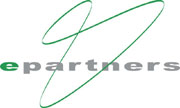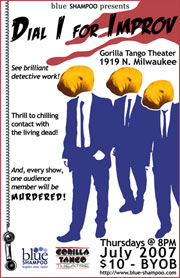Sometimes Entrepreneurship Finds You
I didn’t set out to own my own business, and going back to college it was the furthest thing from my mind. Over the years I have met people who had their own businesses as their primary income, and where I admired them, I never saw it as something I could – or would do.
As many people who develop and design Internet solutions do, I always did some work on the side, whether it was a favor for a friend or organization to outright freelance work. As time went on, the people who I did this work for were demanding more from me, and wanted to expand their presence on the Internet.
It wasn’t until my wife and I decided to move to Chicago when I began to entertain the idea of going out on my own, or dare I even call it entrepreneurship at the time. Faced with the task of finding a job in the Windy City, I decided to create my own. And many of these people who I did freelance before are clients today, and were part of the catalyst for me starting Dunkirk Systems in the first place.
Do I think about this much? Actually, yes. When I talk to others who have struck out on their own, or even those who probably should blaze their own trail, I recount this story. Whatever you call it – entrepreneurship, the American Dream – I call it doing something that I enjoy, and I can’t think of a better thing to do to occupy my time.
Business • (1) Comments • PermalinkThanks ePartners for the Wrigley Field Tour
 Back in May I was fortunate to have been invited to a demonstration of Microsoft’s CRM suite called Dynamics, presented by ePartners. The presentation just so happened to be at Wrigley Field in Chicago, and following the presentation and buffet lunch, there was a tour of the historic ballpark for all attendees. Where it was good to see a working demo of the latest features from Microsoft, I have to admit the tour of Wrigley clinched me – as well as most others – for attending.
Back in May I was fortunate to have been invited to a demonstration of Microsoft’s CRM suite called Dynamics, presented by ePartners. The presentation just so happened to be at Wrigley Field in Chicago, and following the presentation and buffet lunch, there was a tour of the historic ballpark for all attendees. Where it was good to see a working demo of the latest features from Microsoft, I have to admit the tour of Wrigley clinched me – as well as most others – for attending.
After exceeding my Flickr monthly upload limits twice, I finally have all of the Wrigley Field tour photos online and available for viewing. Growing up a Red Sox fan and hearing of the similar mystique of the Friendly Confines, its great to go to games, and even better to get to see the park “behind the scenes” when nobody else is there.
Thanks to ePartners for the demo, lunch and tour!
Diversions • Technology • (2) Comments • PermalinkThe Year is Half Full
As we enter July every year, we tend to reflect on how half of the year is all ready over. Or at least I do that every year. This time, I am taking a more positive approach – the year is half full. Similar to the analogy of the glass being half empty or half full, I say there is a lot of time and a lot of great things to do!
Diversions • (0) Comments • PermalinkSee my next improv show
 My creative outlet continues! Blue Shampoo, the improv comedy troupe in Chicago that I am proud ot be a member of, presents our next show, Dial "I" for Improv!
My creative outlet continues! Blue Shampoo, the improv comedy troupe in Chicago that I am proud ot be a member of, presents our next show, Dial "I" for Improv!
Dial "I" for Improv is a mix of long and short form improv - entertaining games and scenes attacking the murder mystery genre! See brilliant detective work! Thrill to chilling contact with the living dead! This fully improvised murder mystery is packed with laughs, intrigue, and weird strangeness and strange weirdness of a most supernatural mysterious nature of mystery! Gather your courage all who dare and join the fun! You just might end up a victim...of comedy!
Our show is every Thursday in July - 5, 12, 19 and 26, at the Gorilla Tango Theater, 1919 N. Milwaukee in Chicago - right off the Western Blue Line stop. Show time is at 8 pm and tickets are only $10. The theatre is BYOB, and you will not be alone if you do! You can buy tickets online, or call the theatre at 773-598-4549.
Diversions • (0) Comments • PermalinkThink Before the At-Sign
So you picked the perfect domain name for yourself or your business and you’re ready to apply it to your new Web site. That’s it, right? Wrong. People often don’t think about email addresses for their business or themselves ahead of time, and a little forethought will help in managing your business and the image it presents.
First of all, if you have a domain name, use it for your email – don’t use an address of your Internet provider. By doing so you have the right side of the at-sign in place, but what about the left-side, the email name? First recall that there is a difference between an email mailbox and an alias, and think about which is which after you come up with the names.
There are two types of email names – people and roles, and in this post I will talk about people. You will want a naming standard for how people’s names will be structured. In thinking of how names will be used, take in mind the current size of the business, anticipated size about a year from now, multiple people with the same name and how formal you want to be.
If it’s just you and you want to be personal, then using just first name is fine. So if your name is Mike, then using “mike” as the email address is fine. But what if you have another Mike? And what if their last name starts with the same few letters or even is the same? You may want to opt for something like “mikem” or “mikelastname” or “mike.q.lastname.” As for formality, this will drive whether you want to use “Mike” or “Michael” or just a first name and initial or a first and last name. Some people may want their choice on this – for example, I am “Mike” not “Michael” as the latter name is used only when someone is yelling at me!
Note that in the email names I have used a period – it or an underscore are the only punctuation you can use in an email name.
Next I will talk about what to keep in mind regarding roles, and how they can be used in conjunction with or in place of people’s names.
Domain Names • Technology • (6) Comments • Permalink
Page 196 of 217 pages ‹ First < 194 195 196 197 198 > Last ›

